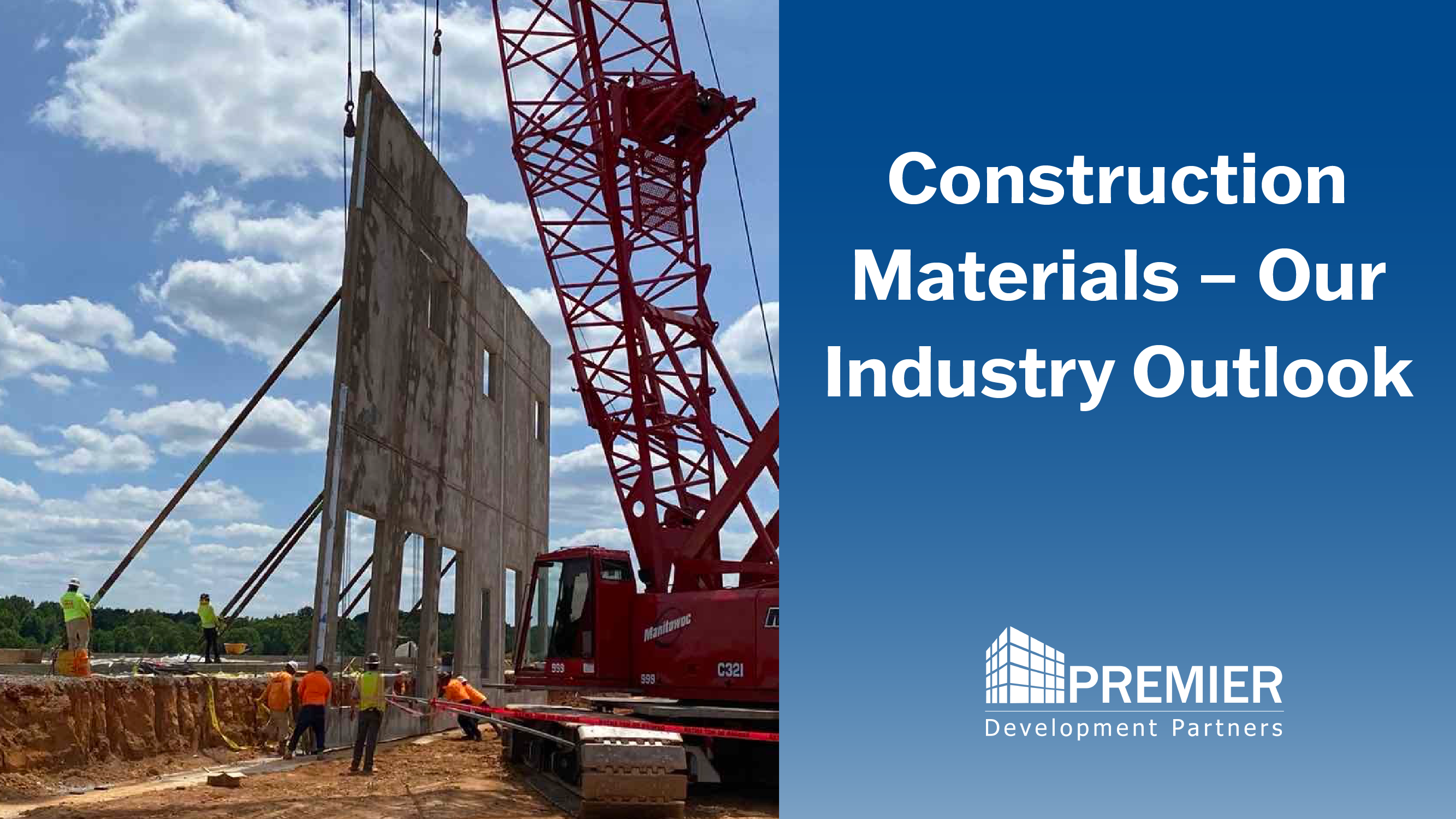Construction Materials – Our Industry Outlook

The supply chain problems experienced in 2020 due to the COVID-19 pandemic have had a lasting impact on the construction industry. After pausing to implement new safety protocols, many jobsites reopened throughout 2020 as contractors are essential workers. However, construction materials became harder to source and prices soared as the demand increased. Today we chat with Linda Sherman, Senior Partner at Premier Development Partners, about the current market for construction materials and what to expect in the industry moving forward.
The conversation below has been edited for length and clarity.
How has the construction industry changed over the past three years?
Developers and General Contractors have faced challenges in the last three years that have been unique to the construction industry. Costs of materials have more than tripled in some categories while material shortages change regularly. We went through a period where you were waiting months for steel and then suddenly it was available, but roofing materials were not. That morphed into concrete shortages, and now most project delays are due to electrical switchgear shortages. Because of these ever-changing conditions, those in the industry have become very creative in finding new ways to overcome material delays and cost increases to maintain schedules and keep the budget on target. Estimators are having a particularly hard time staying abreast of the cost developments. Additionally, all developers have needed to modify their contracts to safeguard against unknown cost escalations. It has not been uncommon to find the cost of material, even when previously contracted, has been increased by the supplier at the time of delivery.
What factors have led to such sharp price increases and lead times?
The main contributing factors have been supply and demand. During the shutdown period, manufacturers fell behind while the construction industry, being considered essential, continued at the same pace which set the supply chain back. On the flip side, this lack of supply has created a fruitful market for industrial property. As more industries move back to the US, the demand for industrial space has outpaced the availability. The Midwest is again thriving in industrial markets due to many factors including affordability, infrastructure access, water, the talent from top universities and a strong blue-collar workforce.
Moving forward, do you anticipate the recent stress on the banking industry to significantly impact the construction industry?
Many strategists have stated that higher interest rates will lead to a decline in the commercial construction industry. Yes, that is partially because the costs have risen; however, the sheer size of the mega construction projects getting started are staggering. Arizona has 12 projects this year alone that are over a billion dollars each. There are also a few projects in the US in excess of 10 billion dollars. The rechargeable battery industry has been a huge boost for the commercial industry. Manufacturing construction is up 22% this year. Overall, the construction industry is expected to grow by 6.5% over the next three years.
Do you anticipate any other factors significantly impacting the construction industry in the near future?
The available workforce will be a major indicator of projects moving forward. More discussions from prospects start with determining the available labor force when searching for new sites. Companies are working more closely with states to find the right fit based on talent. This will be another boost for the Midwest.
Another thing to consider is the possible recession towards the end of 2023 or beginning of 2024; however, there are positive signs that should help soften that concern. The Federal Reserve has signaled a slowdown of pace of interest rate increases, and activity continues to be steady in the commercial construction market. Remodeling of facilities will also grow as more robotics are added to overcome labor shortages.
The final item to consider is the increase in design/build projects. With supply chain shortages, a design/build concept will put developers in a better position to order materials early in the design phase. Electrical needs can be determined quickly, and the switchgear order can be placed while design and permitting continues, saving months on the overall timeline. Prefabrication and Modular Construction are growing rapidly as well. The modular market was around $82 billion in 2020 and is expected to grow close to $110 billion by 2025.
About the Author
Linda Sherman has over 30 years experience of successfully managing commercial construction projects and interior build-outs and has won numerous awards in finish work over the years. Linda has managed the interior build-outs of over seven million square feet throughout Northeast Ohio and has experience ranging from office, industrial, retail, education, health care, to food services. She has been involved in a wide range of project types from $1 million to over $55 million throughout her career.

